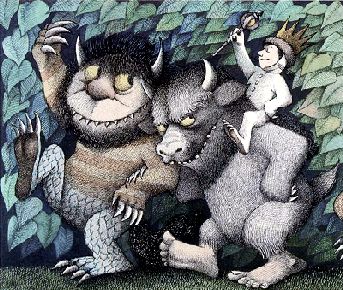It wasn’t the first time I’d hitchhiked, but I was 18 the last time I did anything this dumb. Or this kind of dumb anyway. Allow me to explain.
I was back in the States and it was the day of the final match of the 2014 World Cup, Germany vs. Argentina. My family unfortunately all had a prior engagement. They took the car that morning and left for a certain Country Fair. [1]
I, however, remained true to the country of my husband and my adopted home for the last 26 years. I put on face paint, donned my German lei, and headed out the door.
I’d done my research. I knew the exact location of not just a sports bar in town, but a soccer sports bar at that – and I gave myself plenty of time to get there. As I headed down a footpath alongside the main road, a Mercedes Benz honked its horn repeatedly when the driver passed me. I looked at the car and laughed: he had decorated it with the colors of the German flag. I gave him a big wave and headed for my bar.
Ten minutes later I neared the entrance to a park and was astonished to see the car again. It was waiting for me. The driver had rolled down his window. “Do you know where I can go to see the game? I’m driving through on business, on my way to the coast, and I don’t know where to go to watch the match!” His accent was German and anyway he had the (to me) comforting look of a German engineer. [2]
“I sure can,” I answered. “There’s a sports bar near downtown. You need to turn around, take a left before the ramp for the freeway heading south, go under the overpass, take the one-way road three blocks and….” I stopped talking and considered. The park was empty, and so was the path I was walking on. I thought to myself, “Jadi, this could end up being the last spot anyone might have seen you standing alive before you made one last, stupid, fatal blunder.”
I scrutinized the driver more carefully. And then I made a snap decision.
“It’s complicated. Give me a ride, and I’ll guide you to get to the bar,” I offered. “Otherwise, it’ll take too long to describe.” The surprised dude immediately agreed. He opened the car door and I climbed in.
Fifteen minutes later we claimed two of the very last available seats in the packed bar (the employees were bringing in more chairs when we entered). I sat between the man whose name I no longer remember and a Mexican father and daughter.
The things we do for love (love of soccer, that is). No need to hitchhike this year, which is probably a good thing. I figure I used up my entire quota of guardian-angel-watching-over-you-while-you-do-something-colossally-stupid protection. But I’m definitely watching some soccer. France vs. Croatia, Sunday night! Come early if you want a seat!
NOTES: [1] Go to my post The Oregon Country Fair for more on the fair. I’m still glad I made it to that bar and saw Germany win. [1a] … especially after watching their pathetic performance this time around. [2] The standard German engineer: short hair, clean shaven (99.99% of the time), honest face and slim body wearing jeans, an ironed shirt and an earnest expression.
© Jadi Campbell 2018. Click here for my author page to learn more about my books and me.


 They will all be taking their vacations. Spots that are usually crowded anyway are going to be jam-packed. This is not an experience for visitors with weak hearts or fear of crowds.
They will all be taking their vacations. Spots that are usually crowded anyway are going to be jam-packed. This is not an experience for visitors with weak hearts or fear of crowds.



















 I’ve worked as a massage therapist for the last 30 years, licensed in both the USA and in Europe. I reckon I’ve probably touched 1,000 different bodies. [1] I’ve massaged the following people:
I’ve worked as a massage therapist for the last 30 years, licensed in both the USA and in Europe. I reckon I’ve probably touched 1,000 different bodies. [1] I’ve massaged the following people:


 NOTES: [1] They say for true mastery you must perform a technique 1,000 times, on 1,000 different bodies….
NOTES: [1] They say for true mastery you must perform a technique 1,000 times, on 1,000 different bodies….